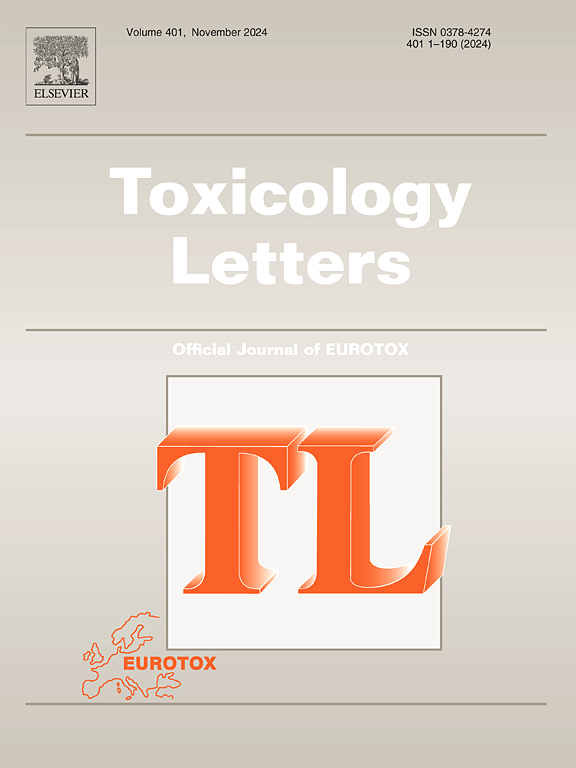Low doses of bisphenol F and S affect human ovarian granulosa cells by reducing the number of active mitochondria and ATP synthesis
IF 2.9
3区 医学
Q2 TOXICOLOGY
引用次数: 0
Abstract
Bisphenols (BPs) are a group of environmental pollutants mainly represented by bisphenol S (BPS) and F (BPF). In ovaries, BPs can accumulate in follicular fluid (FF), changing the follicular microenvironment and simultaneously affecting ovarian granulosa cells (GCs) function. In the present study, we determined the effects of BPS and BPF on oxidative stress and mitochondrial function in human ovarian GCs. Single, short-term treatment with BPs at doses reflecting their concentrations in FF (10 nM) did not affect reactive oxygen species (ROS) levels but induced mitochondrial membrane depolarization. BPF-induced mitophagy decreased the number of active mitochondria and consequently reduced the ATP production rate. The observed changes did not translate into lowered viability of GCs, but long-term treatment with BPF influenced the intrinsic apoptosis pathway by increasing caspase 9 activity without affecting apoptosis. GCs are crucial for ovarian function as they produce primary steroid hormones and regulate oocyte maturation and follicle growth. Mitochondrial dysfunction caused by BPs, manifesting as reduced ATP production in GCs, can directly cause ovarian disorders such as infertility. Therefore, this study highlights the significance of investigating the effects of BPs on reproductive health.
低剂量双酚F和S通过减少活跃线粒体和ATP合成的数量影响人卵巢颗粒细胞。
双酚类物质是一类以双酚S (BPs)和F (BPF)为代表的环境污染物。在卵巢中,bp可积聚在卵泡液(FF)中,改变卵泡微环境,同时影响卵巢颗粒细胞(GCs)功能。在本研究中,我们测定了BPS和BPF对人卵巢GCs氧化应激和线粒体功能的影响。bp单次短期治疗,剂量反映其在FF中的浓度(10nM),不影响活性氧(ROS)水平,但诱导线粒体膜去极化。bpf诱导的线粒体自噬减少了活性线粒体的数量,从而降低了ATP的产生速率。观察到的变化并没有转化为GCs活力的降低,但BPF长期治疗通过增加caspase 9活性而不影响细胞凋亡,从而影响了内在的凋亡途径。GCs对卵巢功能至关重要,因为它们产生初级类固醇激素并调节卵母细胞成熟和卵泡生长。bp引起的线粒体功能障碍,表现为GCs中ATP生成减少,可直接导致卵巢功能紊乱,如不孕症。因此,本研究强调了调查bp对生殖健康的影响的意义。
本文章由计算机程序翻译,如有差异,请以英文原文为准。
求助全文
约1分钟内获得全文
求助全文
来源期刊

Toxicology letters
医学-毒理学
CiteScore
7.10
自引率
2.90%
发文量
897
审稿时长
33 days
期刊介绍:
An international journal for the rapid publication of novel reports on a range of aspects of toxicology, especially mechanisms of toxicity.
 求助内容:
求助内容: 应助结果提醒方式:
应助结果提醒方式:


